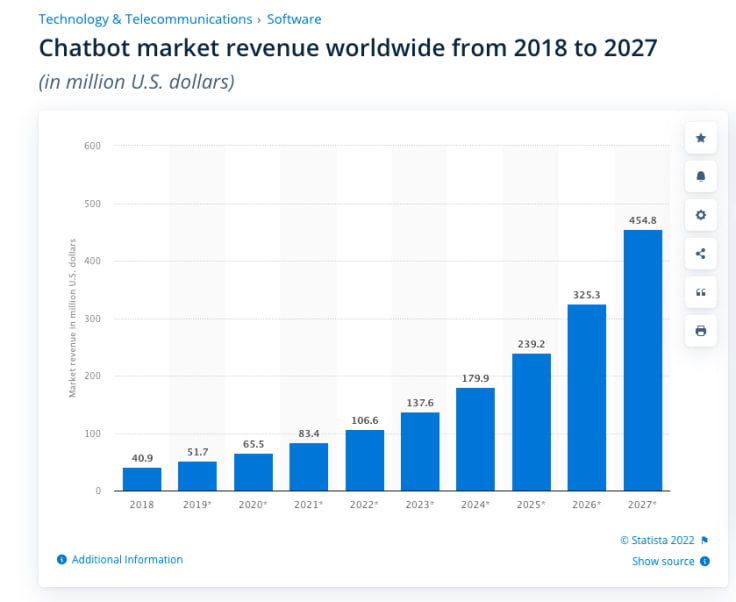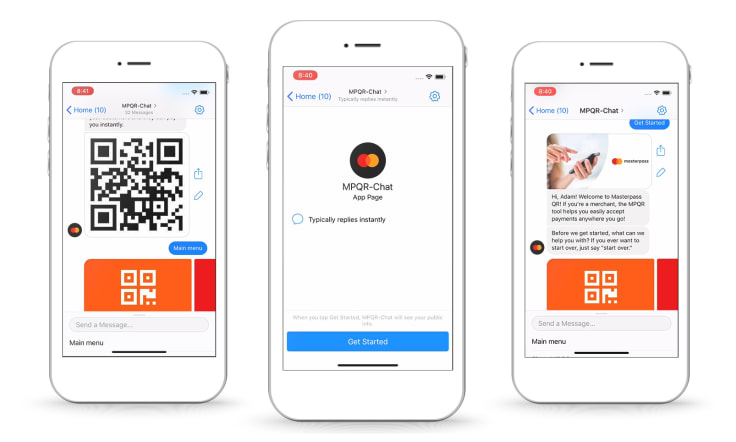Showing top 0 results 0 results found
Showing top 0 results 0 results found

Technology has revolutionized the way businesses operate and interact with customers.
Access to advanced tools and data has simplified the workflow, leading to a more targeted and engaging approach to customer acquisition.
But this is only the beginning.
It’s not usual for businesses to assign a team for cold calling in order to optimize their resources. But today, brands are leveraging artificial intelligence-powered assistants to handle outreach activities.
They’re investing in tools like behavior analytics platforms, web analytics applications, and digital adoption platforms (DAPs) to simplify UX and ensure proficiency on any software platform or app they use. The tools also help them get detailed reports on their website and its visitors. Such traces of the "new" future are already floating in the market.
A great example is artificial intelligence and augmented reality brand experiences, which companies like Microsoft, Apple, and Amazon follow. Reports state that AI may contribute a whopping $15.7 trillion worldwide in 2030.
In this post, I’ll share five crucial things about AI and augmented reality for you to consider. But before that, let's understand what AI and AR mean and how they work.
🤖 Would you like to grow your business with AI?
What is artificial intelligence?

Artificial intelligence (AI) is an advanced technology that enables computer applications to mimic human-like intelligence. AI-equipped systems can resolve problems, make calculative predictions, and provide strategic solutions in real-time.
Working principle: artificial intelligence systems combine a vast data set with iterative processing algorithms to analyze and acquire human-like intelligence. Its human-like intelligence helps perform simple-to-complex tasks with ease. Virtual assistants like Alexa and Siri are the most popular AI applications.
What is augmented reality?

Augmented reality technologies showcase real-world objects by enhancing their properties on a virtual platform.
Working principle: Augmented reality uses camera-equipped devices, such as tablets and mobile phones, loaded with computer vision software that augments or enhances the appearance of real-world objects.
The Google Sky Maps and IKEA Place apps are the leading applications of AR.
The top 5 things businesses should know about AI technologies and augmented reality
1. Chatbots have become an indispensable part of customer experience
AI chatbots, voice bots, WhatsApp chatbots, and several virtual assistants — chatbots have become an integral part of businesses. From boosting customer engagement to strengthening a brand's presence, chatbots have modernized their modus operandi. Reports state that around 40 percent of users prefer chatbots over humans.
No wonder the global chatbot market grew from 40.9 million USD in 2018 to 106.6 million USD in 2022. It may cross 454.8 million USD in revenue by 2027.

The sentiment tracking feature in AI chatbots is helping businesses drive personalized communication.
Here's how it works:
- Customer Data: The AI chatbots use the customers' data to identify their issues. For instance, if a customer reaches out to the chatbot to complain about a delay in product delivery, the AI system checks the sales data. The intelligent chatbot creates dialogues to emphasize and provide solutions.
The conversation may sound like this:
“Hey, I apologize for the inconvenience. Your product is in transition and will be delivered by evening today.”
- Segmentation: It involves changing the tone of the conversation based on the age of the customers. For instance, a 50-year-old customer may have a different conversational style than someone in their twenties.
The AI chatbots change their tone while dealing with customers, ensuring a personalized approach.
With ChatBot software, automating customer service is a breeze. It helps businesses launch intelligent chatbots without any coding. You can count on ChatBot to supercharge your sales and optimize resources.
- Individualization: Unlike previously, chatbots don't offer predefined answers to customers dealing with similar issues. They analyze the sentiment of the users and then answer accordingly. For instance, if the customer’s tone is angry, the chatbot takes extra care and addresses the concern politely.
Understanding the potential of advanced AI chatbot systems and their ability to deal with customers, Mastercard has launched a chatbot for digital payments. The bot addresses queries related to account balance. And it has an integrated payment collection system to collect payments online.

Acknowledging the benefits of artificial intelligence, companies like PayU, Razorpay, and PayPal are also planning to launch AI chatbots for online transactions.
2. Businesses are using AI creatively
Businesses are investing in AI-driven applications.
From creating creative video games, music, and movies, AI-embedded applications are ruling the market. While that is incredible, artificial intelligence is now transitioning to the next level of creativity.
New AI models like Google's Bard and Chat GPT-4 are redefining the potential of AI. The fourth-generation Generative Pre-trained Transformer is an advanced neural network machine learning model. It can predict and generate any text, simplifying the workflow.
Creativity is unarguably a human skill, but artificial intelligence models like these will soon be experts. The precision level will be much higher than we see at present. For instance, see the following content written and edited by an AI-embedded application.

Notice the way the sentences are crafted. The accuracy and readability of the content are poor.
In the future, the content will be more grammatically correct and creative. It might not be surprising to see AI used for writing newsletters, headlines, logos, and other creative stuff. Fortunately, the accuracy will improve, minimizing such errors. Investing in such platforms today can be a game-changer, boosting ROI in the long term.
3. Extended Reality (XR) and the metaverse are shaping the future
Mixed reality (MR) is a combination of AR and VR. And XR, or extended reality, is a catch-all term for all of them. XR uses the combined elements of AR and VR to produce stellar virtual experiences.
Nowadays, the concept of a metaverse, also referred to as social media 2.0, is on the boom. Even Facebook has changed its name to Meta.
What is metaverse, and what does it have to do with XR?
The term "metaverse" is taken from the novel Snow Crash by Neal Stephenson, and it is described as a 3D virtual space that creates an immersive environment around real life. As XR combines MR, AR, and VR, it has great potential to create a virtual environment that can blur the lines between the digital world and real life.
No wonder Facebook is working on building a Meta platform, taking social networking to new heights. Social networking in the future may look the same as talking to someone face-to-face.
Here's a list of the main properties that make metaverse powerful:
- 3D virtual details
- Synchronicity
- Real-time rendering
- Unlimited users
- Strong sense of presence
The VR concert in Fortnite by Travis Scott is a perfect example of metaverse and XR. With more than 12.3 million attendees, the VR concert became a mega-hit.

Check out their website if you want to experience the feel of the concert in the metaverse.
4. Low-code and no-code AI are here to stay
Artificial intelligence engineers need to create codes and algorithms for preparing AI applications.
The scarcity of skilled professionals makes it difficult for companies to implement AI-driven applications successfully. Companies, especially SMBs, can't afford to invest money in building and deploying systems.
Low-code and no-code AI applications are the best solutions to overcome these challenges. They provide easy-to-use interfaces along with drag-and-drop elements to reduce the complexity of the applications. Unlike traditional UI, these applications use natural processing language to simplify the workflow.
For instance, the Runway platform allows developers to enhance images, videos, and written content. It uses machine learning technology to help improve professional standards without any investment.
Google AutoML and Amazon SageMaker are also no-code applications that you can trust. Over time, these platforms may advance to a level where they operate via voice or written instructions.
🤖 Would you like to grow your business with AI?
5. XR is taking the virtual shopping experience to a new level
Be it offline or online - the retail industry is going through a massive shift.
XR technology is shaping its future by offering immersive shopping experiences. XR is enabling businesses to create a virtual environment like brick-and-mortar stores. With the integration of augmented reality systems, customers can look closer at the products and make buying decisions.
For example, customers can try clothes, shoes, jewelry, and more virtually. They can further have interactions with human-like chatbots for any queries.
FaceCake is a prime example of a virtual closet. It allows customers to try clothes, jewelry, and other accessories.

The shopping platform also offers styling suggestions based on the customers' personalities.
Another example is BMW's AR-VR experience. It allows customers to customize their cars by choosing colors using smartphones. They can experience how the end product will look via virtual reality goggles. All-in-all, the possibilities with XR are endless. The real world may look entirely different from the lens of XR in the future.

Conclusion
Artificial intelligence and augmented reality have already stepped into our lives. They’re transforming the way businesses operate now and in the future.
Google's CEO, Sundar Pichai, confirms that the impact of AI will be greater than that of electricity or fire. The shared trends and real-life examples further validate and affirm their potential. Remember to invest in these latest technologies today and stay future-ready!



